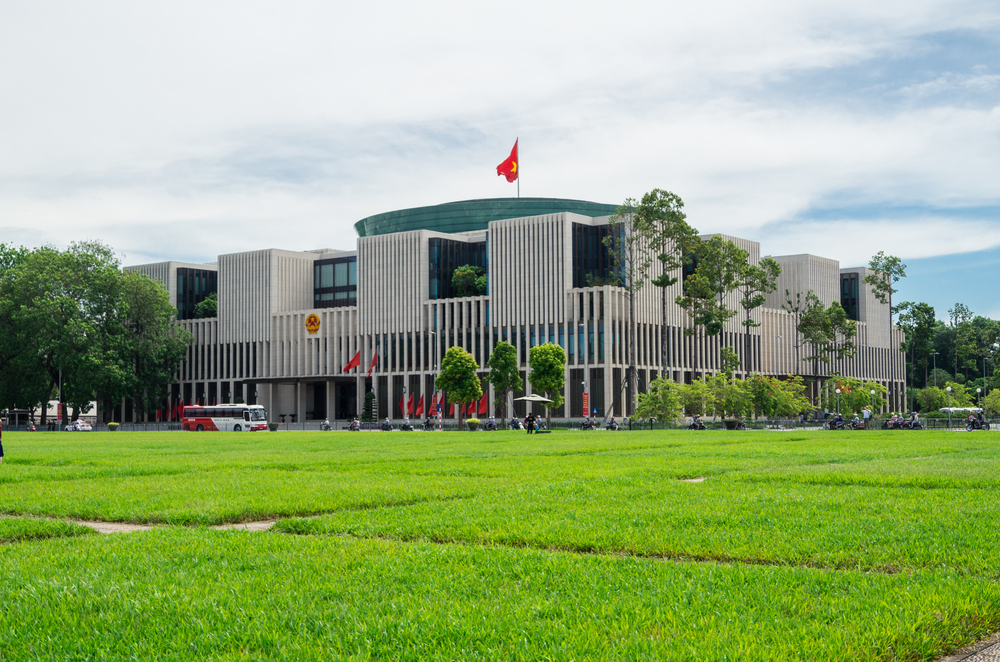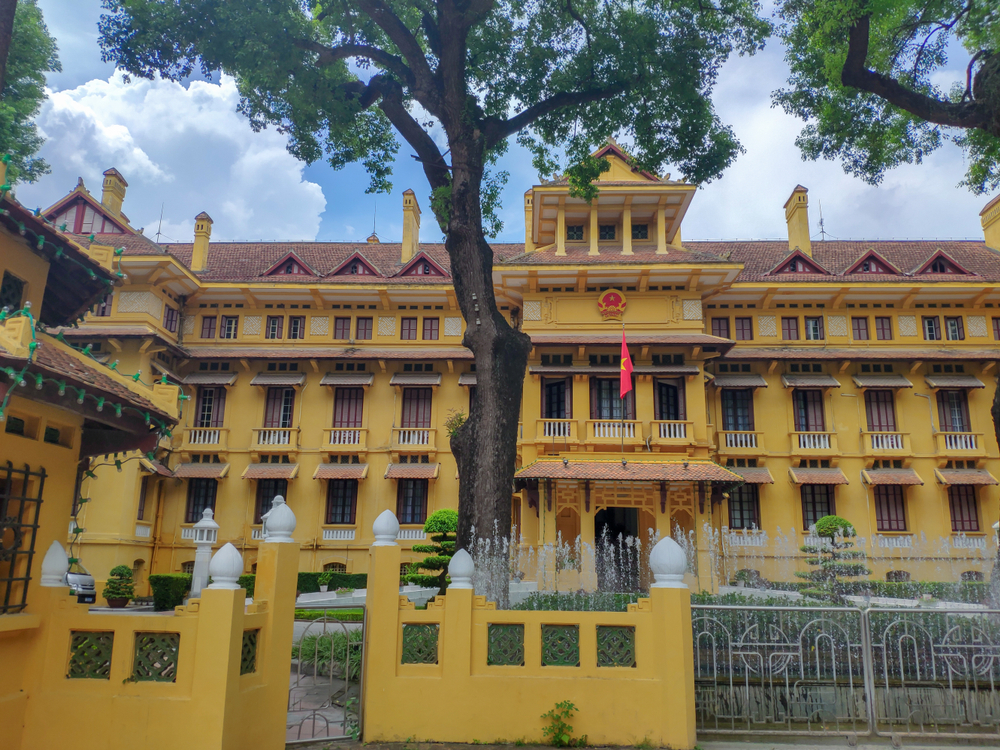Government Overview
Country
Local Long Form: Cong Hoa Xa Hoi Chu Nghia Viet Nam
Local Short Form: Viet Nam
Etymology: Viet nam translates as "Viet south," where Viet is an ethnic self-identification dating to a 2nd century CE kingdom and nam refers to its location in relation to other Viet kingdoms.
Capital
Hanoi
Geographic coordinates: 21 02 N, 105 51 E
Time Difference: UTC+7 (12 hours ahead of Washington, DC, during Standard Time)
Independence
Date: 2 September 1945 (from France)
Constitution
History: Several previous; latest adopted 28 November 2013, effective 1 January 2014.
Amendments: Proposed by the president, National Assembly’s Standing Committee, or supported by at least two-thirds of the National Assembly membership. A decision to draft an amendment requires approval by at least a two-thirds majority of the Assembly membership, followed by the formation of a constitutional drafting committee to write a draft and collect citizens’ opinions. Passage requires at least two-thirds majority of the Assembly membership. The Assembly can opt to conduct a referendum (2018).
Legal System
Civil law system
Citizenship
Citizen By Birth: No
Citizen By Descent: At least one parent must be a citizen of Vietnam.
Dual Citizenship Recognized: No
Residency requirement for Naturalization: Five years
Suffrage
Suffrage: 18 years of age, universal
Executive Branch
Chief of State: President
Head of Government: Prime Minister
Cabinet: Cabinet (Central Government) proposed by prime minister, confirmed by the National Assembly, and appointed by the president
Description: Vietnam is a single-party communist state. The constitution gives executive authority to a president (Chủ tịch nước Cộng hòa xã hội chủ nghĩa Việt Nam), prime minister (Thủ tướng Việt Nam), and cabinet of government ministers called the Central Government. In practice, government policy is shaped and dictated by the Communist Party of Vietnam—specifically the party’s National Congress, Central Committee, and Political Bureau (or Politburo). The president serves as head of state, acts as military commander-in-chief, represents the country in diplomatic relations, and ensures the concerted functioning of all bodies of the state. The president is considered the second highest figure in government behind the General Secretary of the Communist Party of Vietnam. It is possible for the president and General Secretary to be the same person. The president is indirectly elected by the National Assembly from among its members for a single five-year term. The third highest figure is the prime minister, who chairs the country’s main executive organ, the Central Government, and has power to choose its members. The prime minister is elected by the National Assembly.
Legislative Branch
Description: Lawmaking authority is vested in the unicameral National Assembly (Quoc Hoi), which—following 2016 elections—contains 494 seats. Members are directly elected in multi-seat constituencies by absolute majority vote and serve for five-year terms. The National Assembly meets twice a year. Operating mainly as a legislative arm of the Communist Party’s Politburo, the National Assembly does not initiate legislation, but forges legislation based on Politburo resolutions.
Judicial Branch
Description: The highest judicial body is the Supreme People's Court, which consists of the chief justice, deputy chief justice, and 13 judges. The chief justice is elected by the National Assembly upon the recommendation of the president for a renewable five-year term. The deputy chief justice is appointed by the president from among the sitting judges for a five-year term. The judges are appointed by the president and confirmed by the National Assembly for five-year terms. Subordinate courts include High Courts (administrative, civil, criminal, economic, labor, family, juvenile), provincial courts, district courts, and a Military Court. Note: The National Assembly Standing Committee can establish special tribunals upon the recommendation of the chief justice.
Copyright © 1993–2025 World Trade Press. All rights reserved.

 Vietnam
Vietnam 


